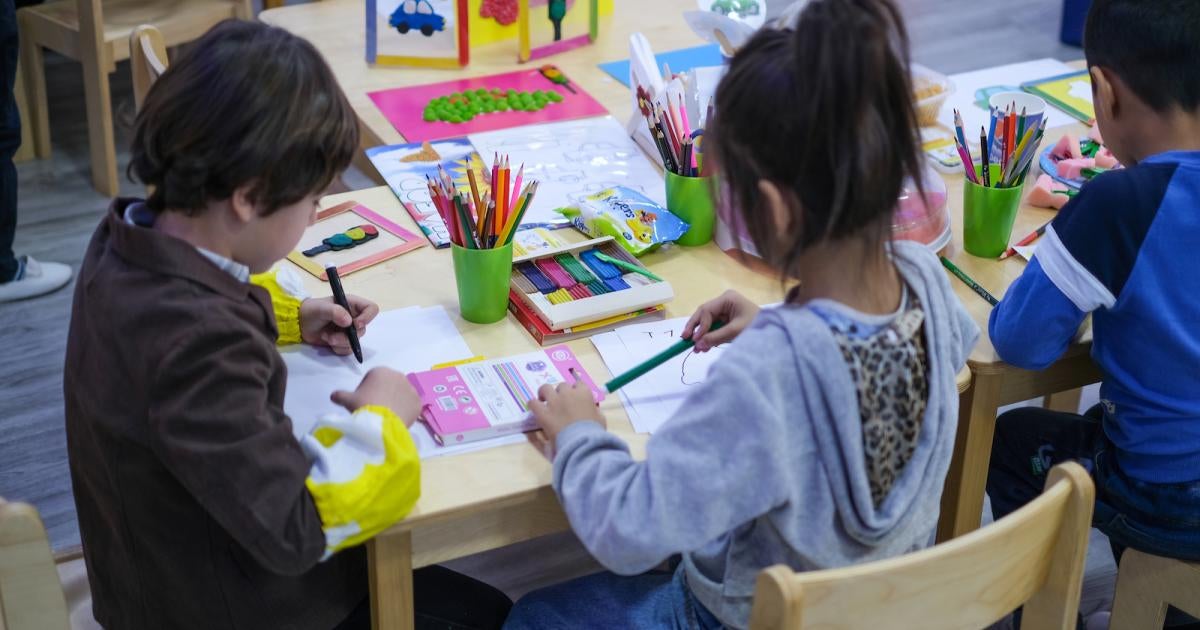The Christmas holidays are over and children in Luxembourg have to go back to school this week. This is a good opportunity to think about how all children in the world can get an education.
Great progress has been made since the right to education for all was enshrined in the Universal Declaration of Human Rights in 1948. While in 1950 less than half of children aged 5 to 14 attended school at all, today they do so around 90 percent of all children to primary school.
However, if we look at the period before and after primary school, the picture becomes cloudy. About a third of children worldwide do not make it to high school, and more than half do not complete it. Almost half of children worldwide receive no preschool support. In the EU France is the model country, where 99.5 percent of children receive preschool support. Croatia has the highest secondary school completion rate at 97 percent.
Many parents cannot afford to send their children to preschool and secondary school. Human Rights Watch surveyed children and parents across Africa, Asia, and the Middle East who say they lack the means to pay school fees or other school fees.
According to international human rights law, children have the right to free primary education. The focus on primary education dates back to the period between the 1960s and 1980s, as various contracts were written. However, decades of research and everyday experience show that primary school alone is not enough to offer children every chance of good development.
An adaptation of international law to today’s circumstances through a contract, which explicitly guarantees free education to all children from preschool to high school, would accelerate progress on a global scale. Such a treaty would also focus international attention on dismantling one of the biggest barriers to education. The support of all EU countries would be an important first step towards this.
Brain development occurs most rapidly in the first few years of life. Therefore, children should be supported especially in this phase. Quality preschool education makes an impact long term has a positive effect on the cognitive and social development as well as the health of children. The preschool optimally prepares children for primary school and their later education. She ensures that Children with disabilities Being included and supported in lessons from the start promotes their enrollment and reduces discriminatory attitudes towards them. Preschool support also reduces inequalities between children from different income levels.
Secondary education, including vocational training and further education, provides young people with a broader range of skills Expertise and skills, which are crucial for their future. This also includes realistic employment opportunities and preparation for adult life. Children with a good secondary education are more likely to find a job, earn more and earn more as adults are less likely to fall into poverty or are more likely to be able to escape from a life of poverty. They are more likely to eat healthier, seek medical care, have better mental health and are less likely to have unwanted pregnancies. Secondary education promotes political participation, reduces exclusion and enables children to use modern technologies. Ensuring that children attend or remain in secondary school can help prevent child labor, Child marriage and prevent the recruitment of children by armed groups.
A lack of free preschool and secondary school education leads to disproportionate disadvantage for girls and women. Many parents who have limited resources are under social pressure to give preference to their sons over their daughters, which is why it is primarily girls who are denied secondary school. The exclusion of children from preschool prevents parents – mainly mothers – from pursuing paid employment or otherwise participating in public life.
For states, expanding free and public preschool and secondary education involves significant costs, but investments in education are of enormous social benefit and contribute to economic growth, so they pay off many times over. Many low- and lower-middle-income countries have recently expanded free or compulsory preschool education, including Comoros, Lebanon, Madagascar, Mongolia, Nepal, Sierra Leone, Tajikistan and Uzbekistan.
Still, some countries will need international help. Estimates According to the UN, the funding gap for free pre-school through secondary education could be closed if 40 high-income countries fulfill their commitments. This includes devoting at least 0.7 percent of their gross national income to services to promote the economic and social development of developing countries, as Luxembourg already does, and allocating 10 percent of these funds to education.
Some progress has been made over the past year. A group of 73 countries joined in the UN Human Rights Council led by Luxembourg and the Dominican Republic Explanation in which they advocate strengthening the right to education. The declaration provides an explicit right to at least one year of free pre-primary education and free secondary education.
As a next step, all EU members should support a new human rights treaty that explicitly recognizes the right of every child to early childhood education, including at least one year of free pre-school education, and strengthens the right to free secondary education. Of course this is an ambitious goal, but with Luxembourg at the forefront we can achieve it. Then millions of children could go back to school in the coming years.
2024-01-09 10:39:56
#School #education #worldwide


